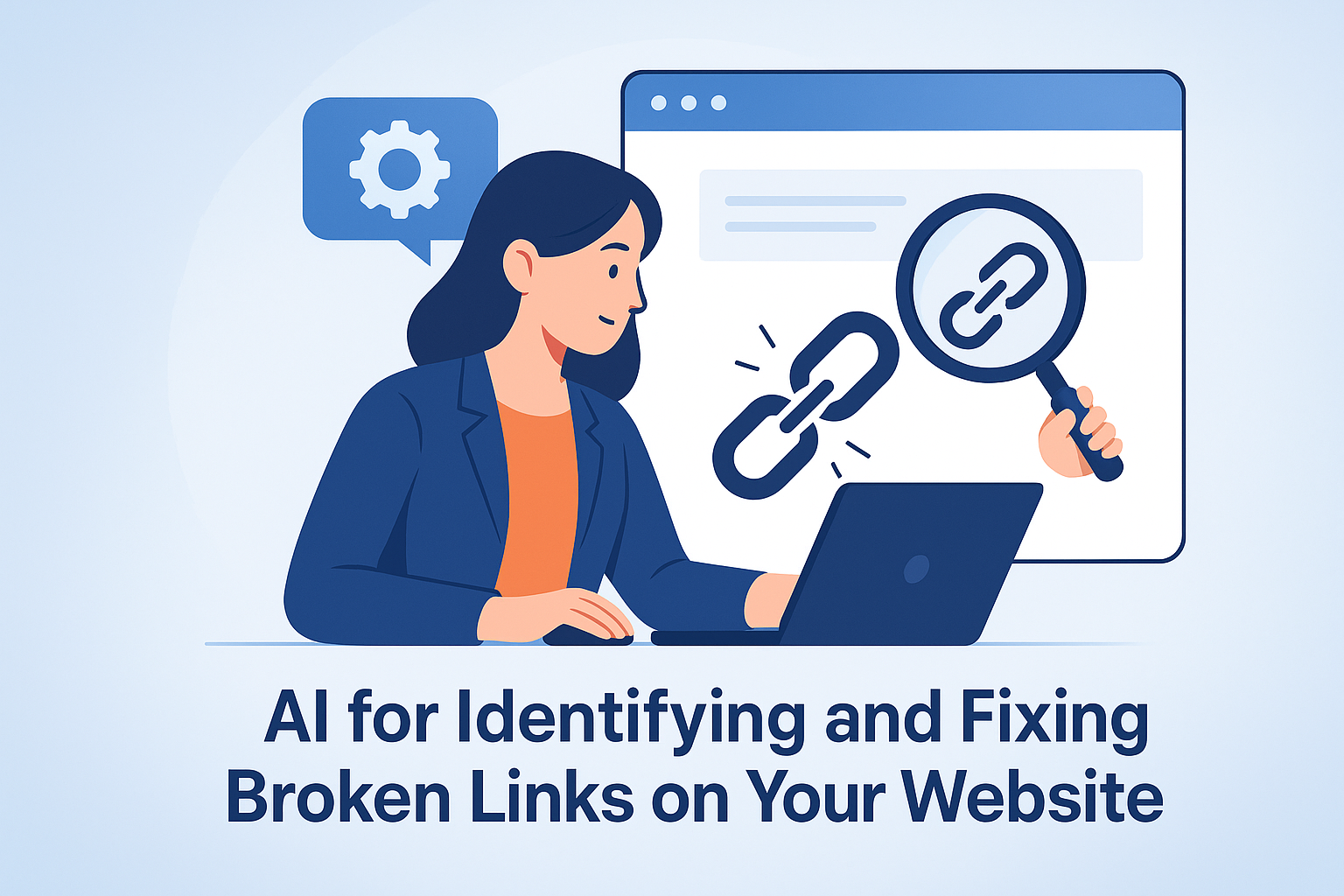Image optimization is often treated as an afterthought—but it shouldn’t be.
Search engines rely on alt text to understand what an image represents. Screen readers use it to describe content to visually impaired users. And Google uses it as a ranking signal for image search, accessibility, and even overall page quality.
If your images are missing alt attributes, or if you’re stuffing them with keywords, you’re missing out on:
- Better accessibility compliance
- Stronger on-page SEO signals
- Inclusion in Google Images
- Higher Core Web Vitals scores through better UX
With AI, you can now automatically generate accurate, relevant, and SEO-smart alt text at scale—without guesswork or repetition.
This guide will show you how to use:
- DIYSEO GPT to identify alt text gaps and image SEO opportunities
- The SEO AI Writer to write optimized, contextually relevant alt text
- The Link Marketplace to promote pages with strong accessibility and content completeness
Why Alt Text Matters for SEO and UX
Alt text (short for “alternative text”) serves two primary purposes:
- Accessibility: Describes visual elements for users who rely on screen readers or have images disabled.
- SEO: Helps search engines understand image content, which supports context and relevance for surrounding content.
Benefits of Strong Alt Text:
| Benefit | Impact |
|---|---|
| SEO | Improves image search visibility, contextual signals, and indexing |
| Accessibility | Meets WCAG standards and ADA compliance goals |
| UX | Provides fallback descriptions if images fail to load |
| E-E-A-T | Supports trust and content completeness in Google’s eyes |
Alt text should be descriptive, concise, and keyword-aware—but never spammy.
Common Alt Text Mistakes to Avoid
| Mistake | Why It Hurts |
|---|---|
| Empty or missing alt text | Reduces accessibility and SEO value |
| Keyword stuffing | Hurts readability and violates best practices |
| Generic descriptions | “Image” or “photo” offers no value |
| Repetitive phrases | Using the same alt text for every image confuses search engines |
AI can help you avoid all of these issues—by generating natural, purpose-driven alt text across your site.
Step-by-Step: Optimizing Alt Text with DIYSEO Tools
✅ Step 1: Identify Missing or Poor Alt Text with DIYSEO GPT
Use the DIYSEO GPT and run the Layout & Readability Review prompt to detect images that:
- Are missing alt attributes
- Contain non-informative or repetitive text
- Are being ignored by search crawlers due to formatting issues
Follow up in Chat History:
“Which blog posts or pages have missing or unoptimized image alt text?”
You’ll receive a list of priority pages to update based on traffic, engagement, and technical quality.
✅ Step 2: Use SEO AI Writer to Create Optimized Alt Text
With your list of images in hand, open the SEO AI Writer and generate alt text that balances SEO and accessibility.
Prompt Example:
“Write alt text for an image of a laptop displaying a DIYSEO analytics dashboard. Target keyword: ‘SEO performance insights.’ Make it descriptive and natural.”
AI Output:
- “Laptop screen showing the DIYSEO dashboard with SEO performance graphs and analytics metrics.”
Other Use Cases:
- For infographics: “Describe this infographic about AI-powered keyword research tools. Keep it under 125 characters.”
- For team photos: “Write alt text for a professional headshot of our founder, Kristopher Jones, for the About page.”
- For product/service illustrations: “Write alt text for an illustration showing how DIYSEO GPT integrates with Google Search Console.”
The SEO AI Writer ensures every image:
- Is accurately described in its unique context
- Includes target terms when appropriate
- Improves both content completeness and visual accessibility
✅ Step 3: Optimize Images Sitewide Using a Batch Strategy
For larger websites or blogs with many visuals, build a workflow using AI and prompts like:
- “Generate alt text for all hero images used in these 10 blog posts.”
- “Write alt text for all feature icons in the SEO audit service page.”
This lets you update entire content sections efficiently without manual tagging.
Use DIYSEO GPT to prioritize which pages should be tackled first based on performance.
✅ Step 4: Reinforce Alt Text with On-Page and Structural Context
SEO doesn’t happen in isolation. Alt text becomes more powerful when it aligns with surrounding content.
Use SEO AI Writer to:
- Rewrite image captions to match alt text
- Add keyword-aligned headings above visuals
- Link images contextually within the paragraph
Prompt:
“Rewrite this paragraph to better integrate and support the image of an AI-generated content calendar. Mention key benefits and tools.”
This boosts both semantic context and UX clarity, reinforcing Google’s understanding of your page topic.
✅ Step 5: Validate Alt Text and Accessibility Improvements
After updating your content, use tools like:
- WAVE Web Accessibility Tool
- Chrome Lighthouse accessibility audit
- Manual screen reader checks (NVDA or VoiceOver)
These confirm your AI-generated alt text is:
- Present and well-structured
- Helpful to assistive technologies
- Not redundant or confusing
DIYSEO GPT can also help flag any remaining issues with prompts like:
“Are there remaining accessibility or image optimization issues on these pages?”
Bonus: Promote Alt-Optimized Content with Link Marketplace
Strong alt text and accessibility signals show Google that your content is complete and trustworthy.
Once your content is optimized, use the Link Marketplace to:
- Acquire backlinks to pages with strong media and content formatting
- Build authority to blog posts that now rank in image search
- Target niches like accessibility, digital UX, and SEO
Example Strategy:
You optimize your AI SEO Strategy guide with new screenshots, each tagged with alt text and wrapped in semantic sections. Then:
- Go to Link Marketplace
- Filter for SEO/UX/digital accessibility blogs
- Place 2–3 backlinks to drive external validation and visibility
This enhances Google’s understanding of your content’s depth—both textual and visual.
Image SEO Optimization Workflow with DIYSEO
| Task | Tool | Action |
|---|---|---|
| Detect missing alt text | DIYSEO GPT – Layout & Readability Review | Identify image SEO gaps |
| Generate alt descriptions | SEO AI Writer | Write descriptive, keyword-smart alt attributes |
| Align content structure | SEO AI Writer | Rewrite context around visuals |
| Validate accessibility | Manual audit or Lighthouse | Ensure compliance and UX clarity |
| Build backlinks | Link Marketplace | Reinforce value of optimized content |
Real-World Example: Visual SEO Enhancement
Problem: A SaaS blog post featured 6 original charts but had no alt text or captions. Despite strong copy, the page underperformed in image search and had high bounce on mobile.
DIYSEO Fix:
- Ran Layout & Readability Review → Flagged missing alt attributes and visual formatting issues
- Used SEO AI Writer to:
- Write unique alt text for each chart
- Insert captions and keyword-aligned H3s
- Reformat surrounding text for mobile readability
- Built 3 backlinks from design-focused marketing blogs via Link Marketplace
Results:
- Chart images appeared in Google Images within 10 days
- Time-on-page increased by 41 seconds
- Bounce rate dropped by 19%
- Post moved from position #11 to #5 for the keyword “SEO content dashboard”
Final Thoughts
Optimizing image alt text doesn’t just help search engines—it shows your content is complete, accessible, and crafted with care.
With DIYSEO’s AI-powered toolkit, you can:
- Detect image optimization gaps using GPT-driven analysis
- Generate rich, descriptive alt text using SEO AI Writer
- Reinforce value through backlinks using Link Marketplace
Great content isn’t just written. It’s designed—and AI ensures every element, including images, pulls its weight.
Frequently Asked Questions
1. What is image alt text, and why is it important for SEO and accessibility?
Image alt text, or alternative text, is a written description that provides context about an image on a web page. It’s crucial for SEO and accessibility because it enables search engines to understand what’s depicted in the image, improving a page’s searchability. For accessibility, alt text allows screen readers to convey the content of an image to visually impaired users, ensuring that everyone has a complete understanding of the page’s content. Without effective alt text, images might not be indexed properly or might alienate users who rely on assistive technologies to access web content.
2. How does AI contribute to the optimization of image alt text?
AI plays a transformative role in optimizing image alt text by automating the creation and enhancement process. Through machine learning algorithms, AI can analyze images and generate descriptive alt text with accuracy and efficiency. This involves understanding the objects, people, and context within images, allowing AI to create precise descriptions that are both SEO-friendly and accessible. The use of AI reduces manual workload, minimizes human error, and ensures that alt text is rich and detailed, which can enhance website visibility and user experience.
3. Can AI-generated alt text be as effective as manually created alt text?
Yes, AI-generated alt text can be as effective—and sometimes even more so—than manually created alt text. AI systems are trained on vast datasets, enabling them to recognize and describe complex scenes with great sophistication. While human judgment is valuable for understanding nuances, AI’s ability to generate consistent, unbiased, and contextually relevant descriptions can surpass manual efforts in both speed and coverage. Moreover, AI can constantly learn and adapt, improving its performance over time, which can lead to alt text that is not only comprehensive but also aligned with current SEO and accessibility best practices.
4. What are the benefits of using AI for image alt text in terms of accessibility?
Using AI for image alt text significantly enhances accessibility by ensuring that all images on a website are accompanied by accurate descriptions. This is especially beneficial for users with visual impairments who rely on screen readers to navigate web content. AI can quickly analyze and generate alt text for vast image libraries, making it easier for organizations to maintain accessibility compliance across all digital content. By automating this process, AI ensures that accessibility is not an afterthought but an integral part of content creation and management, ultimately fostering a more inclusive online environment.
5. How does AI-generated alt text enhance SEO performance?
AI-generated alt text optimizes SEO performance by ensuring that all images on a web page are properly indexed by search engines. Well-crafted alt text incorporates relevant keywords naturally, which can boost a website’s visibility in search engine results. Moreover, consistently accurate alt text enhances the overall quality and relevance of a page, leading to better user engagement and potentially higher search rankings. By automating the generation of alt text, AI allows for the scalability of SEO efforts without sacrificing quality, ensuring that no image goes unoptimized and that web pages meet or exceed current SEO standards.



